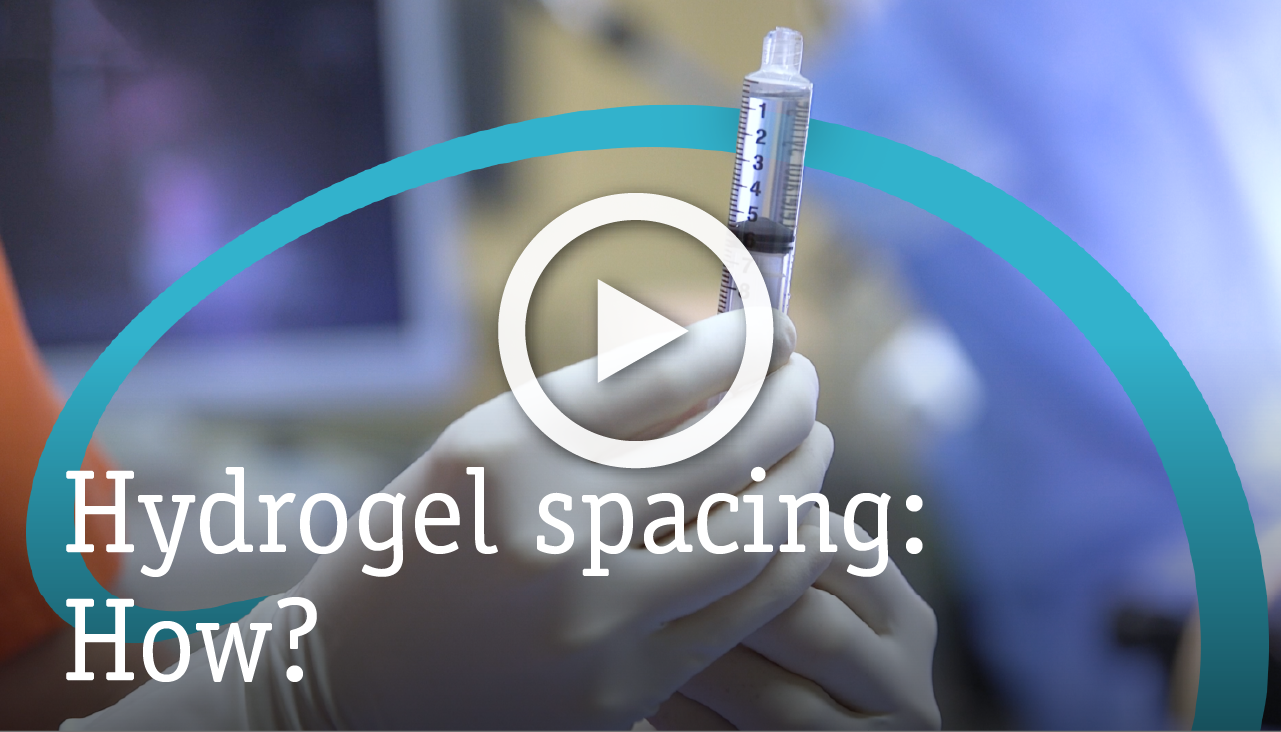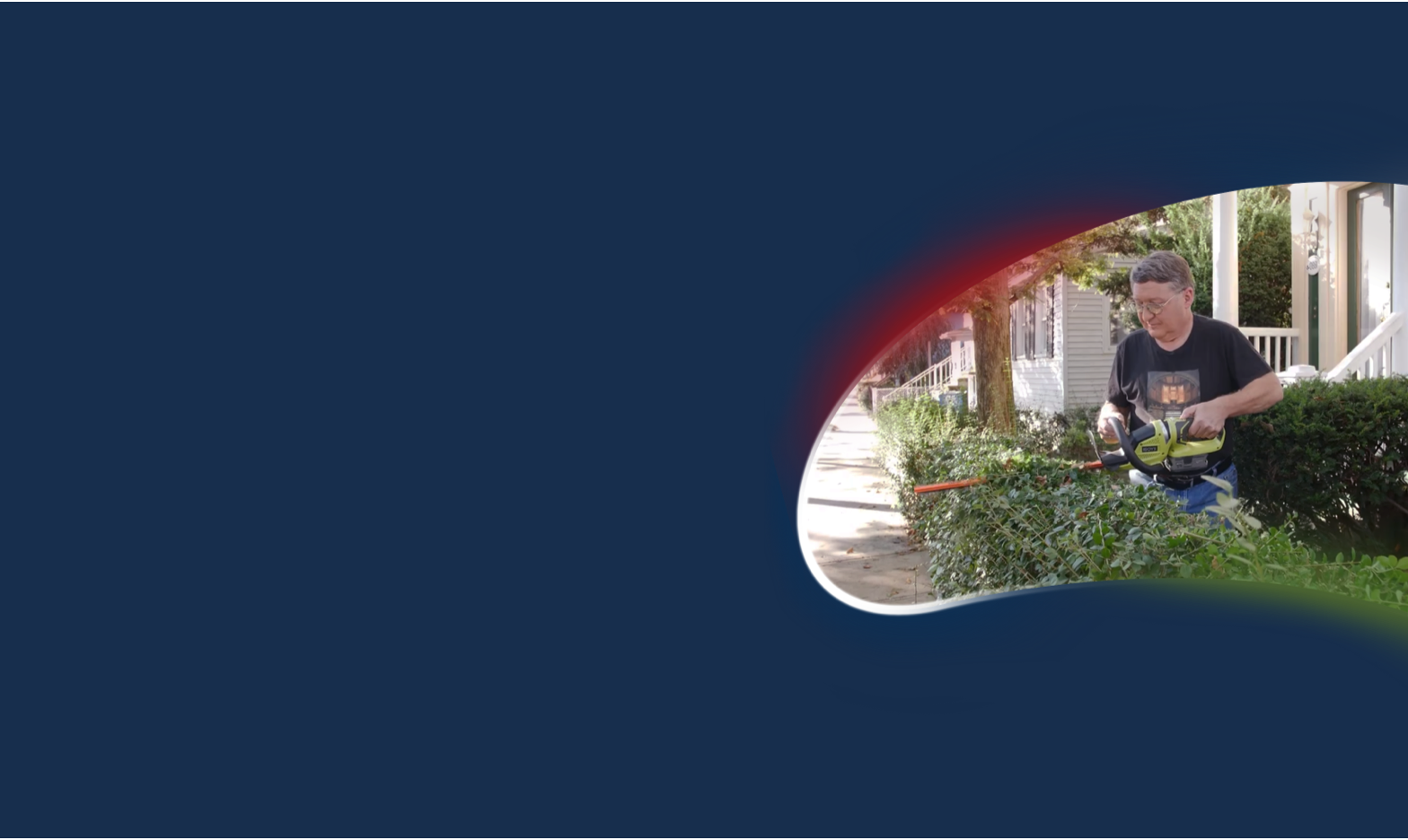How can a radiopaque perirectal spacer enhance the QoL of your patients?
SpaceOAR Vue™ Hydrogel is an innovation that can improve your patient’s quality of life. The enhanced visibility on a CT scan is designed to help you improve contouring accuracy of the prostate and rectum, potentially leading to more accurate treatment planning when compared to SpaceOAR™ Hydrogel.
What is SpaceOAR Vue Hydrogel?
SpaceOAR Vue Hydrogel is an absorbable hydrogel perirectal spacer that temporarily creates space between the prostate and rectum, designed to reduce the radiation dose delivered to the rectum during prostate cancer radiation therapy. SpaceOAR is naturally absorbed after 3 months and is excreted through the patient's urine leaving no implant behind after 6 months.1
Designed with the applier in mind
SpaceOAR Hydrogel can be injected with an 18G needle, under general or local anesthesia, facilitating ambulatory care without dependence on operating room availability. It is a straightforward and safe injection: in a Pivotal Trial, there was a 99% placement success rate.2 Both the radiation oncologists and urologists who applied the spacer rated the device’s ease of use as “easy” or “very easy” 98.7% of the time.2 To ensure that you are comfortable using SpaceOAR Vue Hydrogel, Boston Scientific trains all new implanters through its mandated training pathway, providing support of procedures until you are confident in injecting the gel independently.
References
1. Data on file with Boston Scientific.
2. Mariados N, Sylvester J, Shah D, et al. Hydrogel spacer prospective multicenter randomized controlled pivotal trial: Dosimetric and clinical effects of perirectal spacer application in men undergoing prostate image guided intensity modulated radiation therapy. Int J Radiat Oncol Biol Phys. 2015 Aug 1;92(5):971-7.
Disclaimer
SpaceOAR and SpaceOAR Vue Hydrogels are intended to temporarily position the anterior rectal wall away from the prostate during radiotherapy for prostate cancer and in creating this space it is the intent of SpaceOAR and SpaceOAR Vue Hydrogels to reduce the radiation dose delivered to the anterior rectum. SpaceOAR and SpaceOAR Vue Hydrogels contain Polyethylene Glycol (PEG). SpaceOAR Vue Hydrogel contains iodine. Prior to using these devices, please review the Instructions for Use for a complete listing of indications, contraindications, warnings, precautions and potential adverse events. As with any medical treatment, there are some risks involved with the use of SpaceOAR and SpaceOAR Vue Hydrogels. Potential complications associated with SpaceOAR and SpaceOAR Vue Hydrogels include, but are not limited to: pain associated with SpaceOAR and SpaceOAR Vue Hydrogels injection, pain or discomfort associated with SpaceOAR and SpaceOAR Vue Hydrogels, local inflammatory reactions, infection (including abscess), urinary retention, urgency, constipation (acute, chronic, or secondary to outlet perforation), rectal tenesmus/muscle spasm, mucosal damage, ulcers, fistula, perforation (including prostate, bladder, urethra, rectum), necrosis, allergic reaction (localized or more severe reaction, such as anaphylaxis), embolism (venous or arterial embolism is possible and may present outside of the pelvis, potentially impacting vital organs or extremities), syncope and bleeding. The occurrence of one or more of these complications may require treatment or surgical intervention. URO- 989811-AB MAR 2022
Products shown for INFORMATION purposes only and may not be approved or for sale in certain countries. Please check availability with your local sales representative or customer service.
SpaceOAR and SpaceOAR Vue Hydrogels are intended to temporarily position the anterior rectal wall away from the prostate during radiotherapy for prostate cancer and in creating this space it is the intent of SpaceOAR and SpaceOAR Vue Hydrogels to reduce the radiation dose delivered to the anterior rectum. As with any medical treatment, there are some risks involved with the use of SpaceOAR and SpaceOAR Vue Hydrogels. Potential complications associated with SpaceOAR and SpaceOAR Vue Hydrogels include, but are not limited to: pain associated with SpaceOAR and SpaceOAR Vue Hydrogels injection; pain or discomfort associated with SpaceOAR and SpaceOAR Vue Hydrogels; needle penetration of the bladder, prostate, rectal wall, rectum or urethra; injection of SpaceOAR and SpaceOAR Vue Hydrogels into the bladder, prostate, rectal wall, rectum or urethra; local inflammatory reactions; infection; injection of air, fluid or SpaceOAR and SpaceOAR Vue Hydrogels intravascularly; urinary retention; rectal mucosal damage, ulcers, necrosis; bleeding; and rectal urgency.
All images are the property of Boston Scientific. All trademarks are the property of their respective owners.























